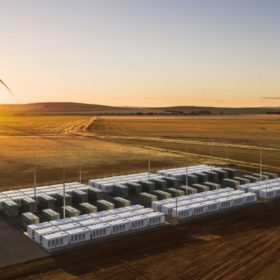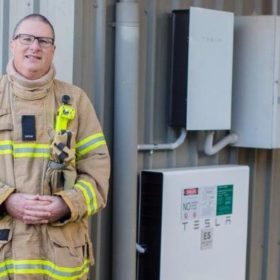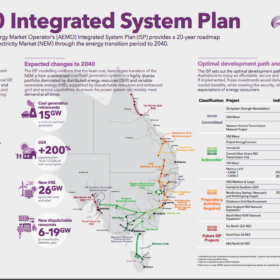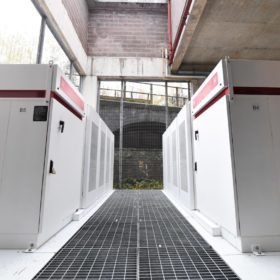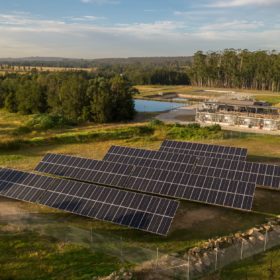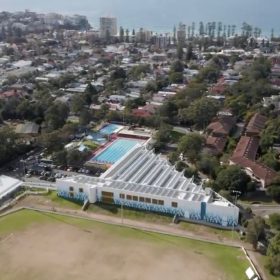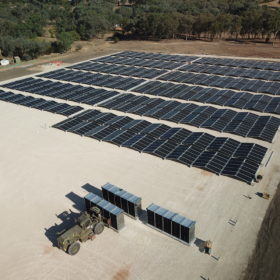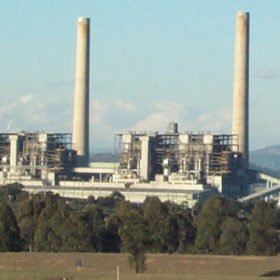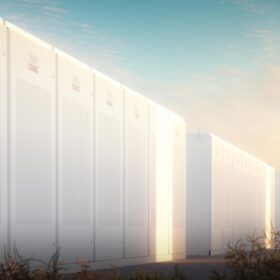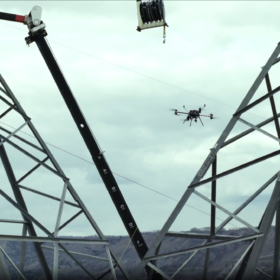Hornsdale posts big first-half revenue for Neoen, solar remains consistent despite poor conditions
Neoen’s Hornsdale Power Reserve has gone to work in the first half of 2020, virtually tripling the French renewables developer’s storage revenue on comparative 2019 levels. However, this growth was largely caused by a one-off event, and a slower Q2 highlights the need for FCAS policy renewal. Neoen’s Australian solar revenues could also achieve little more than consistency thanks to poor conditions.
Tesla battery protects Malmsbury Fire Station from power outages
Malmsbury Fire Station in Victoria has been generously donated a Tesla Powerwall 2 battery, a gift that allows the Malmsbury Fire Brigade to remain operational and vigilant despite power outages.
AEMO’s 2020 ISP: A roadmap to the world’s fastest energy transition
If it was designed with a focus on reliability, security and the lowest cost for consumers, Australia’s main electricity grid would see periods in which nearly 90% of demand is met by renewable generation. A diverse portfolio of distributed energy resources and large-scale solar and wind generation supported mainly by pumped hydro and batteries would ensure the least-cost transition as the nation’s coal plants retire. Adequate investment in transmission infrastructure will be instrumental in making this a reality.
PG&E, Tesla start building world’s biggest battery
The 182.5 MW/730 MWh Moss Landing energy storage system could eventually be expanded to 1.1 GWh – putting it on track to overshadow Tesla’s massive Hornsdale project in Australia.
NSW Govt to invest $15m in Hunter Water solar uptake
NSW State Government-owned water and sewage utility Hunter Water is set to join a now surging river of water utilities around Australia investing strongly in the uptake of solar PV. The announcement came with the completion of a 100 kW system at Branxton Wastewater Treatment Works.
The sun shines on Sydney’s Northern Beaches, but can it shine for them?
Sydney’s Northern Beaches Council has installed its largest solar array to date, a 265 kW rooftop system atop the Andrew ‘Boy’ Charlton Aquatic Centre in Manly. Council is revving up its solar capacity on its way to a goal of having renewable energy power all suitable Council sites by 2030, an ambition it hopes will inspire more local residents to take up solar too.
Victoria expands Solar for Rentals program
The Victorian government has boosted its solar rental scheme with interest-free loans in addition to two rebates per financial year landlords were already able to access.
Federal government awards major project status to Sun Cable’s 10 GW solar plan
The Australian federal government is fast-tracking the world’s biggest solar and storage project in the sun-drenched Tennant Creek region that aims to power Darwin and export solar from the outback to Singapore and eventually Indonesia via a submarine transmission link.
A ‘just transition’ just about the only transition worth having
A team of international researchers featuring ANU’s Prof Frank Jotzo has published a study on the ‘just transition’ from coal to renewable sources of energy. The paper looks at comparative examples of transitioning economies, taking account of political realities, and ultimately shows that a ‘just transition’ is just about the only transition worth having.
Macca’s 1000th site is a McSolar deal
1000 sites into the Sunburnt Country and McDonald’s has had the bright idea of investing in solar. The fast-food giant has begun construction on its 1000th Australian site, a ‘sustainable flagship’ which utilises rooftop solar and other sustainable practices as a possible model for fast-food franchises going forward.
